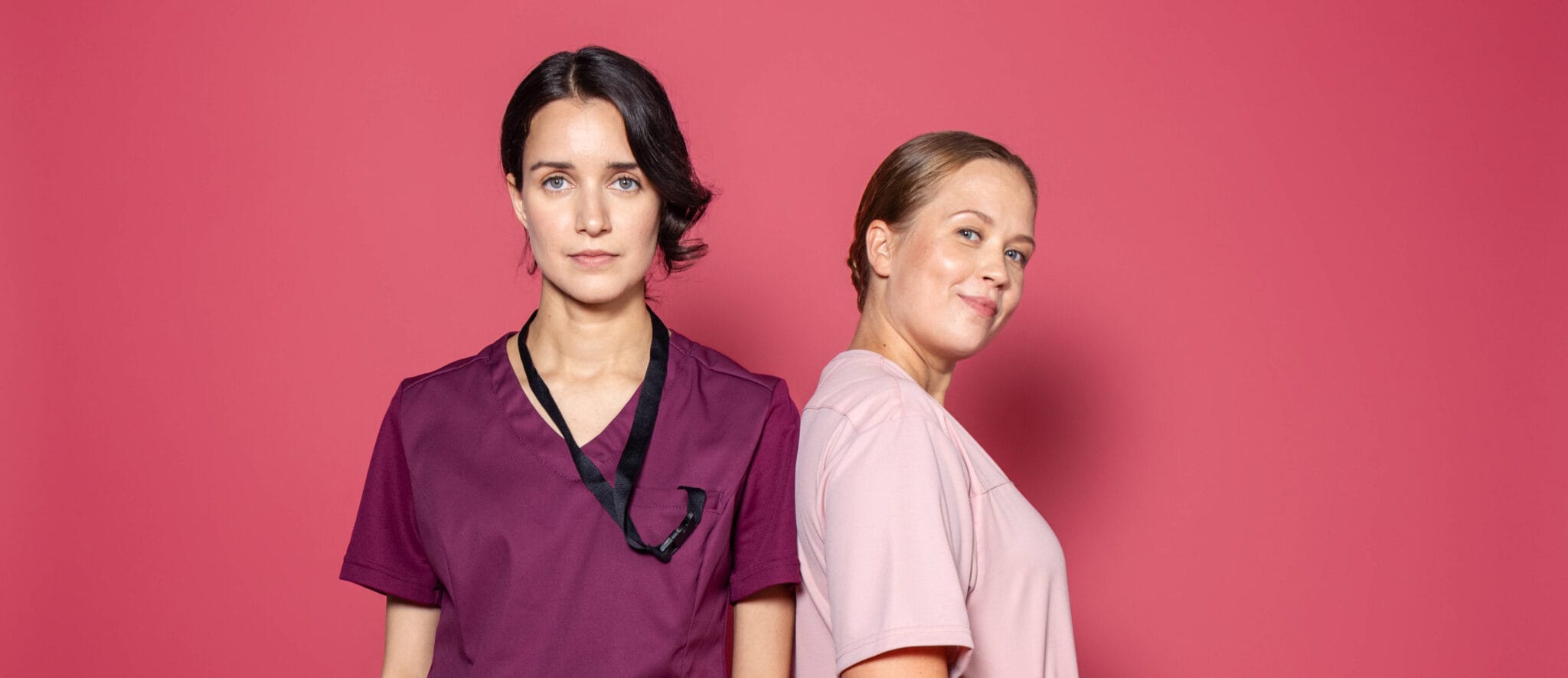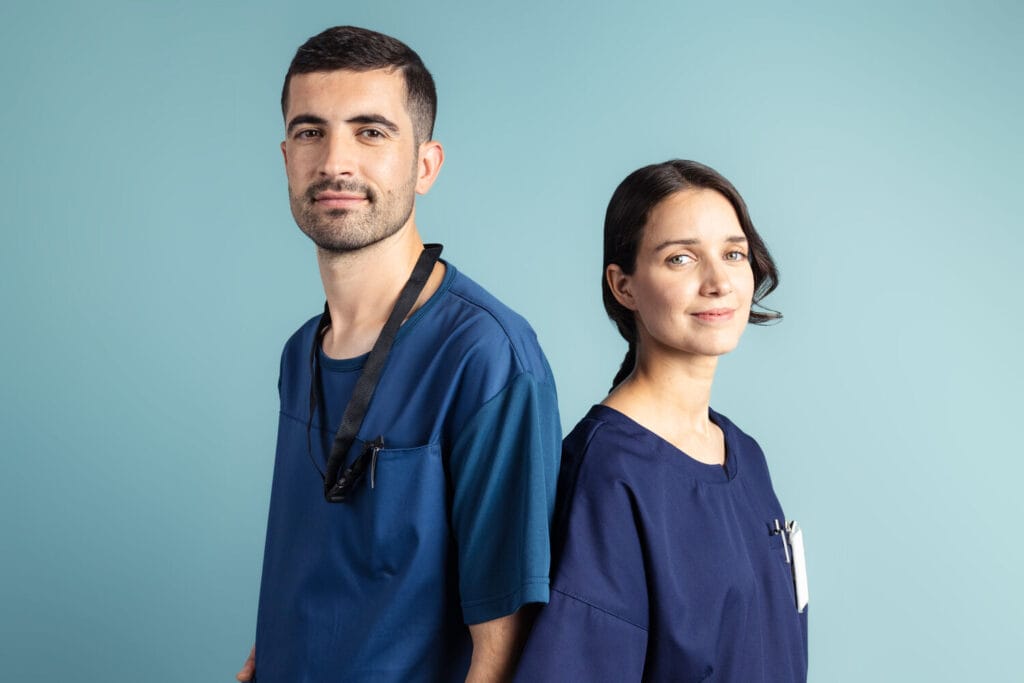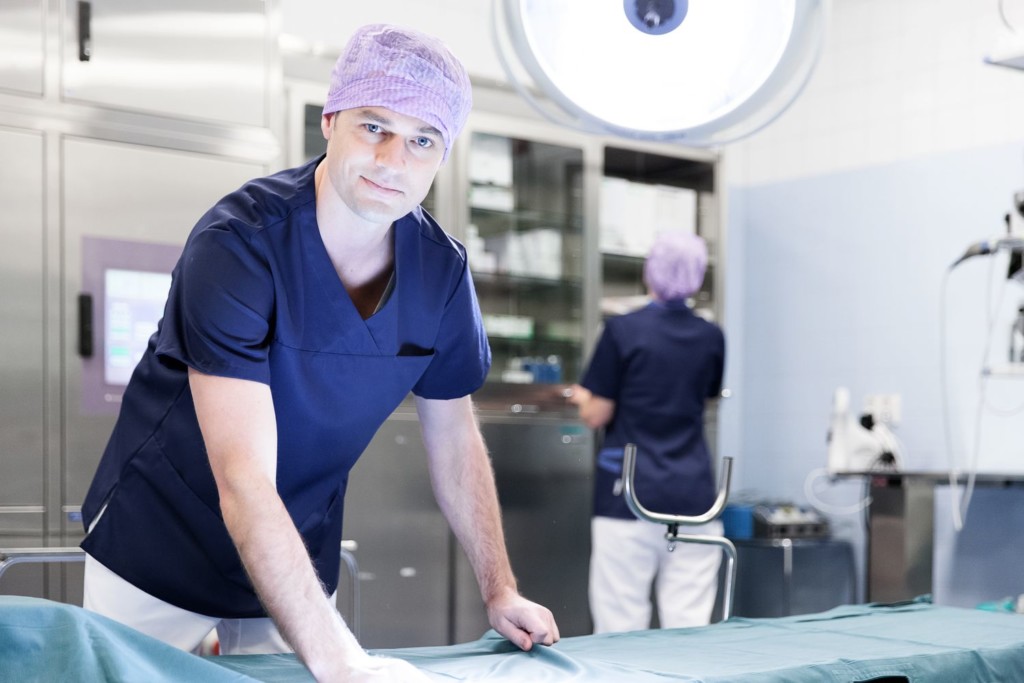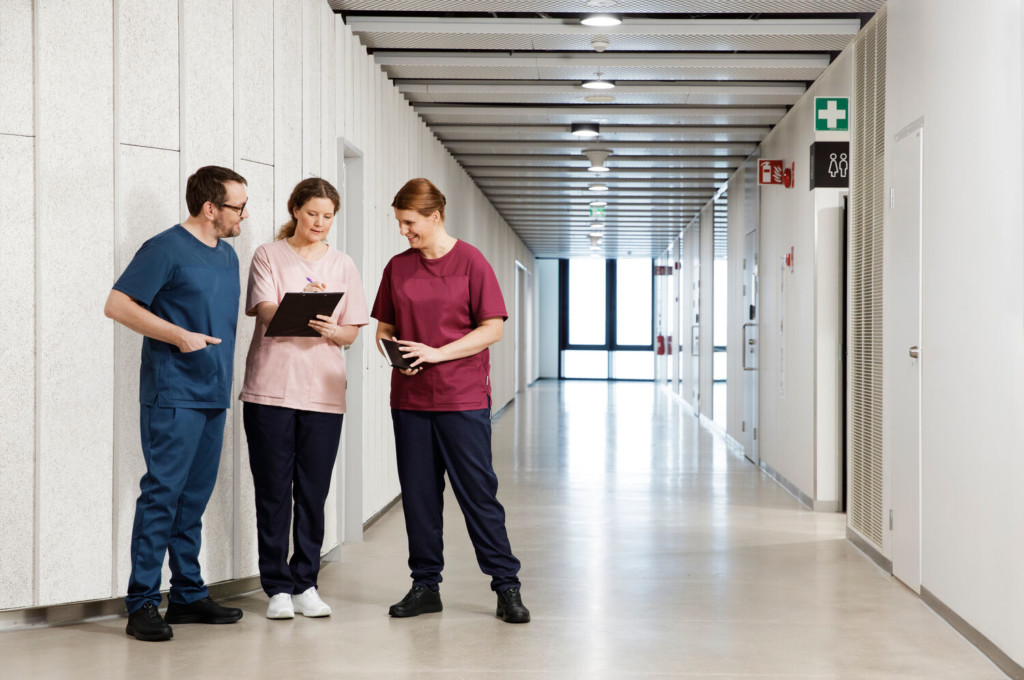
Toward more hygienic healthcare uniforms: Tips for success
Standardised, hygienic healthcare uniforms play a crucial role for a few key reasons. Medical scrubs, lab coats, and jackets help form healthcare workers’ professional identity. They also make it easy for patients to identify who they’re dealing with. This goes a long way towards creating a positive patient experience.
Healthcare-associated infections (HAIs) pose significant risks and costs in healthcare environments worldwide. When well maintained, healthcare uniforms improve cleanliness and infection control. In fact, most health service professionals see hygiene as the top priority for workwear, followed by comfort, fit, and practicality.
What steps can you take to minimise infections and ensure the hygiene and safety of your healthcare uniforms? In this article, we break down infection control risks around healthcare uniforms. How do you succeed in maintaining hygienically clean uniforms and textiles?
What is hygienically clean?
“Hygienically clean” is a standard used to minimise pathogens on textile products. It boils down to a level that won’t cause any human harm or health issues. To break it down, “hygienic” refers to pathogen elimination. On the contrary, “clean” refers to removing inorganic matter like stains and odours, and having an attractive appearance.
When it comes to hygienic healthcare uniforms, there are a few different types of bacteria to consider:
1. Spore forming bacteria: These have a greater survival rate in the healthcare environment. They have resistance to desiccation, disinfection, and higher temperatures.
2. Fungal pathogens: These also survive on various hospital textiles.
3. The SARS-CoV-2 virus: This can persist on clothes for up to two days. On surgical masks, stainless steel, and plastic they survive for up to seven days.
What’s the difference between “hygienically clean” and “disinfected”? “Disinfected” is a term used to define a specific level of acceptable bacterial presence on a textile. Through disinfection, we achieve hygiene: disinfection is the process, and hygienically clean is the end result.
To achieve a hygienically clean environment, a laundry facility must follow specific best practices and pass bacteriological tests and facility inspections. Established guidelines and standards, like a pass-fail benchmark of 20 or fewer colony forming units (CFUs), determine how you earn a hygienically clean certification.
Check out the Transmission Control podcast
Check out the Transmission Control podcast episode The Dirty Truth about Dirty Scrubs: Toward More Hygienic Hospital Uniforms, where Aniruddha Banerjee, Director & Global Head of Healthcare at Lindström, delves deep into this topic.
Home laundering is a risk in maintaining hygienic healthcare uniforms
At some medical centres, workers are expected to clean their scrubs at home. While home laundering might seem like a convenient option, it comes with some serious risks.
Transfer risk
By taking your uniform home, you risk transferring bacteria to your home environment. Unlike with in-house or industrial laundry services, workers who wash their uniforms at home don’t typically separate laundry based on designated soil areas or clean areas. So if a virus is on your uniform, it could transfer onto other surfaces or clothing items in the wash.
Three key factors affect the transfer of microorganisms from textiles: 1) surface properties (like crevices and grooves), 2) friction, and 3) moisture. The less surface roughness and the more friction and wetness a textile experiences, the more likely microorganisms will survive in the textile and transfer. For example, cotton absorbs moisture to a greater extent than synthetic materials like polyester.
Regulations around home washing vary from country to country, but at the height of the COVID pandemic, expert scientists advised the UK government that workers should never wash their uniforms at home during the pandemic.
Contaminated uniforms not only pose transfer risks in the home setting, but also to immunosuppressed patients in the healthcare setting. For example, if you enter the room of a patient with a methicillin resistant staphylococcus aureus (MRSA) infection, the bacteria will transmit to your garment about 70% of the time — even if you never actually touched the patient. And if you don’t change into street clothes before leaving work, you increase the risk of this bacteria spreading to the outside world.
Risk of cleanliness
Studies have shown that scrubs washed at home have significantly more contamination than scrubs washed within a healthcare facility or outsourced for cleaning.
The Center for Diseases and Control (CDC) recommends that healthcare textiles should be washed at 71°C (160°F) for a minimum of 25 minutes. However, when washing uniforms at home, some workers can only achieve a temperature of 60°C. If you can’t achieve the recommended temperature reading, then the virus won’t get eliminated from the textile.
To compensate for the lower water temperature, could you simply add a disinfectant to your home laundry and still kill microorganisms? Bleaching and proper drying and ironing after washing have been found to reduce microorganisms on home-laundered uniforms. However, these practices might not always be regular and consistent, and there’s no way for management to ensure that all employees follow strict laundering directions, perform quality control, and measure CFUs.
Considering these risks, healthcare facilities are better off outsourcing laundry to a third-party provider or taking care of it in-house. Especially for smaller practices that might not have the resources in-house, outsourcing is a smart option.
Key benefits of industrial laundering
Many healthcare professionals don’t realise they can rent scrubs and other textiles instead of buying. Here are the main benefits of partnering with a workwear rental service.
Guaranteed hygienically clean textiles that meet industry standards
To ensure your healthcare workers’ uniforms are hygienically clean, you need to take a three-step approach: 1) prevent, 2) monitor, and 3) document. Working with a credible third-party provider that follows the hygienically clean process makes it easy to cover all three steps, and gives you peace of mind that your staff and patients are safe.
1. Prevent
Companies in the laundry sector are required to follow the risk analysis and biocontamination control (RABC) approach.
Working with a rental textile service provider guarantees the prevention of cross contamination or recontamination of textiles throughout the entire process — from the laundry facility to your central collection point.
2. Monitor
The laundry facility will undergo inspections to verify that their processes are compliant, and conduct microbiological tests to measure the cleanliness of the laundered textiles.
Periodic, randomised microbial swab sample testing is required to achieve the hygienically clean certification from the US-based Textile Rental Services Association (TRSA). The European Textile Service Association would perform these inspections in Europe. Microbial swab testing can also be done at the hospital’s end to ensure the textiles reaching the patients are in hygiene equilibrium.
3. Document
You’ll receive textile and process-related reports from your rental textile provider, which you must preserve at your medical centre. These customised reports will ensure you comply with audit requirements.
Visibility into the product lifecycle through RFID technology
Working with a third-party provider that uses smart textiles with RFID technology gives you full visibility of your healthcare uniforms.
You’ll be able to track the number of washes and ensure you meet strict hygiene standards. Reports about your uniform lifecycle will also help you comply with industry standards, as mentioned above.
When uniforms are contaminated, RFID tags allow you to pinpoint any potential patient exposures. Additional benefits of smart uniforms include never having to manually search for missing garments, and ensuring there’s always enough workwear available for your staff.
Easy-to-manage processes
Maintaining hygienically clean healthcare textiles can be a rigorous process that consumes your time, money, and energy. By outsourcing the textile management process — from cleaning to inventory management — you’ll be able to focus on your core business: patient care.
The entire process will be more efficient and transparent, which will ensure infection control, round-the-clock stock availability, and standardised operations. With a rental textile management tool like eLindstrom, it’s easy to order, repair, or return healthcare textiles in a just a few clicks.
Eco-efficient washing
Healthcare’s total climate footprint is equivalent to 4.4% of global net emissions (two gigatons of carbon dioxide). In other words, if the health sector were a country, it would be the fifth largest emitter on the planet.
Working with a sustainable third-party provider can help you take responsibility for your carbon footprint and reduce the environmental impact of your supply chain. In the washing process, sustainable service providers will:
– Recycle water and use heat from wastewater to warm fresh water in the washing process
– Optimise the use of water and energy in their laundries, as well as their customer delivery loads and routes
– Lower washing temperatures when possible
Compared to home washing, industrial washing can help you save big on water, detergent, energy, and textile waste.
Take action to protect your staff and patients with hygienic healthcare uniforms
The risk of spreading infection through healthcare textiles is significant enough to warrant the expense of professional laundering.
Several countries like Belgium, Australia, and Canada have already prohibited wearing healthcare uniforms outside the workplace, and require healthcare facilities to provide clean uniforms to their employees. As a healthcare leader, you need to make these investments for the safety of your employees and patients.
For the price of a take-away coffee once a week*, you could outsource uniform laundering and the whole end-to-end process to a company that follows the stringent industry requirements and delivers hygienic healthcare uniforms to your doorstep.
*) estimated on Finland price level – the actual service price will be tailored to you based on your need.




